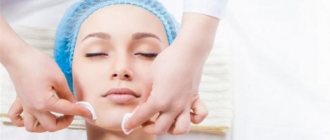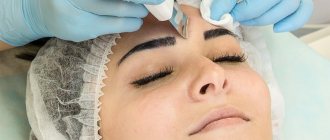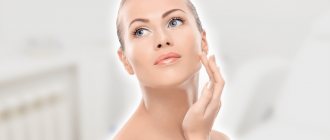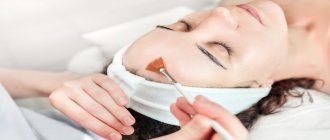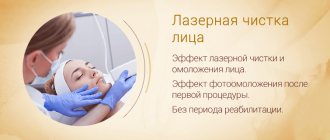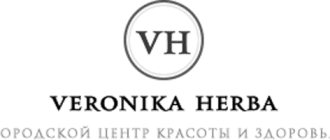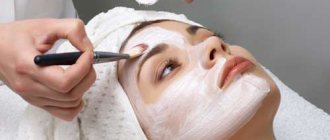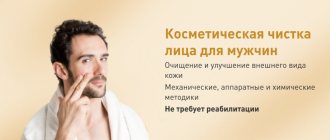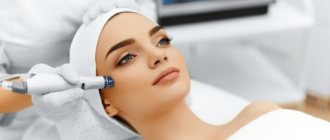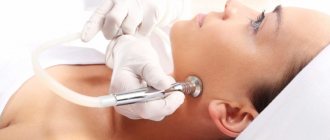Benefits of technology
- non-traumatic: the absence of mechanical impact eliminates the possibility of pigmentation;
- hardware cleaning does not injure blood vessels and does not leave noticeable marks on the skin;
- hygiene;
- uniform and gentle cleansing of the skin;
- removal of excess sebum, dead cells, impurities;
- possibility of carrying out even for those with thin and sensitive skin;
- compatibility with other types of cosmetic procedures - for example, peeling;
- You can start doing ultrasonic cleaning as early as adolescence;
- With regular ultrasonic cleaning, a complex effect is observed.
It is recommended to do ultrasonic cleaning once every 1-3 months, depending on the condition of the skin. The procedure does not last long, is painless and does not require rehabilitation, which is also an undeniable advantage of the technology.
Facial cleansing during pregnancy
It is impossible to say in advance how safe ultrasonic cleaning will be for the patient. This procedure is not traumatic, does not involve violating the integrity of the skin or introducing a particular composition under the skin.
However, risks are always present. If possible, it is better to avoid ultrasound until after breastfeeding. But if you really want to, you need to talk to a gynecologist. In the early stages and mid-pregnancy, ultrasound cleaning is possible for some women.
If the period is late (8-9 months), cleaning cannot be carried out, at least for the reason that the woman will have to remain motionless for a long time. And this is strongly not recommended.
There are different types of facial cleansing: for example, laser, chemical, ultrasonic cleansing. The highest quality and most useful during pregnancy of any stage is ultrasound facial cleansing. Massage from the influence of ultrasound waves improves skin elasticity and enhances interaction with cosmetics. However, a pregnant woman should consult a gynecologist on the eve of the procedure to exclude possible individual contraindications.
Author: Ekaterina Nikolaevna Kozlova
Mesotherapy: history of appearance
The history of cosmetology remembers many interesting cases when important, epoch-making discoveries were made completely by accident. Something similar happened with mesotherapy. Its technology was invented in 1958, when the then unknown doctor Michel Pistor practiced in the small French village of Bre-et-Lue. One of his patients was deaf and suffered from bronchial asthma.
A French doctor gave him an intravenous injection of the anesthetic drug procaine to relieve attacks of suffocation. The treatment did not give the expected result, but the next day the deaf patient reported that he had begun to hear, which surprised the young doctor.
Interested in the achieved effect, M. Pistor repeatedly made attempts to reproduce similar results from the use of procaine with the participation of other patients. Ultimately, he came to the conclusion that intradermal administration of the drug directly into the focus of the pathology or the area adjacent to it has a pronounced effect on the derivatives of the mesoderm, i.e. on the skin, and the effects achieved fall under a new definition - “mesotherapy”.
Continuing to experiment in this direction, M. Pistor published the results of his observations in the authoritative French medical journal “Presse Medicale”, published under No. 44. In his article, the French doctor first described the new method and formulated its basic principles - “rarely, little, in the right place”, which were firmly entrenched in the methodology and became its motto.
For a long time, mesotherapy meant exclusively intradermal injections of procaine. The technique was considered an alternative medicine and was used to relieve spasms and pain. And only the opinion of more authoritative doctors helped bring her to a fundamentally new level of development.
Thus, a significant contribution to improving the method was made by the Spanish master of aesthetic medicine Ignacio Ordiz, who came to the conclusion that during mesotherapy procedures it is possible to administer not only procaine, but also other drugs relevant to the patient.
At the same time, he placed special emphasis on the fact that a positive treatment result is achieved due to a double effect - the pharmacological effect of the administered substances and the stimulating effect of the injections themselves.
French doctor Andre Dalloz-Bourguignon also confidently supported the principles of mesotherapy, noting that it is ideal for administering absolutely any pharmacological substance to achieve the desired effect. And in 1987, mesotherapy was finally officially approved by the Paris Medical Academy of Sciences, after which it quickly found its application in cosmetology and became one of the most popular procedures for maintaining beauty and youth.
Ultrasonic cleaning steps
The procedure is carried out after consultation with a specialist - a dermatologist-cosmetologist. During this session, you must talk to the doctor as honestly as possible - you cannot hide the fact of pregnancy! If your gynecologist and cosmetologist at the Marina Ryabus clinic allow you to undergo cleaning, you sign informed consent for the procedure.
The skin is cleansed of impurities, makeup and treated with an antiseptic. Then the doctor turns on the ultrasound machine and begins to cleanse the skin. How does ultrasound work? It kind of pulls out all the impurities from the pores without injuring the skin or leaving marks on it.
The procedure lasts up to an hour, so plan your time in advance. As for anesthesia, it is not required for ultrasound cleaning. At the end of the session, a soothing composition is applied to the skin. The doctor then makes recommendations for home care and you leave the clinic.
Ultrasound cleaning will not disrupt your plans - you can even do it during your lunch break! The face will not appear noticeably red or swollen.
Restrictions after the procedure
- It is not recommended to use decorative cosmetics.
- Do not touch your face with unwashed hands.
- You cannot stay in the sun without a cream with UVA protection.
- You cannot use other methods of cleansing the skin: homemade scrubs, peelings, etc.
- It is not recommended to overheat or overcool your face.
- It is necessary to use the products recommended by the cosmetologist.
The doctor will be in touch with you if you have questions after the procedure. Usually, ultrasonic cleaning has no consequences and does not affect the patient’s usual lifestyle.
